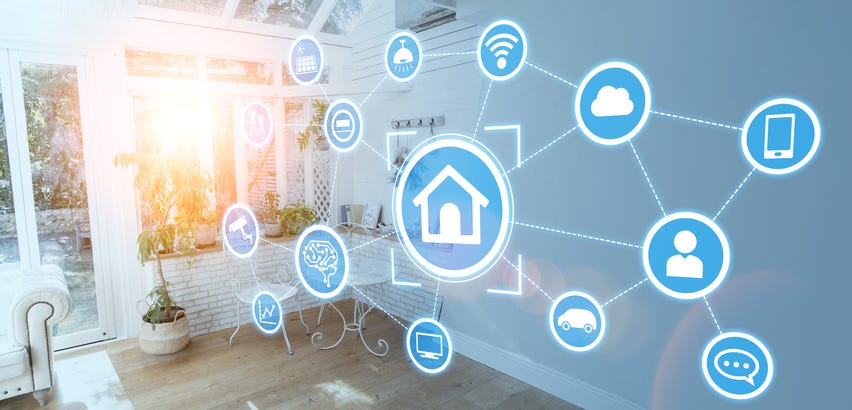
IoT-Controlled Lighting Systems: Revolutionizing Modern Tech Spaces
Share
In the fast-evolving world of technology, IoT-controlled lighting systems are emerging as a game-changer for tech professionals and enthusiasts alike. These cutting-edge systems combine the Internet of Things (IoT) with advanced lighting solutions, offering unprecedented control and efficiency. As technology continues to advance, integrating IoT into lighting systems is becoming increasingly essential for creating smarter, more responsive environments.
At the heart of IoT-controlled lighting systems lies the ability to seamlessly connect various devices, enabling real-time control and automation. This integration not only enhances user experience but also contributes to energy conservation and sustainability. With the increasing demand for smart home solutions, IoT lighting systems are paving the way for the future of intelligent living.

How Do IoT-Controlled Lighting Systems Work?
The concept of IoT revolves around connecting everyday devices to the internet, allowing them to communicate and interact with one another. In the context of lighting systems, IoT technology enables users to control their lights remotely via smartphones, tablets, or voice-activated devices. This level of control is made possible through the use of sensors, wireless connectivity, and smart hubs.
For instance, an IoT lighting system can automatically adjust brightness levels based on natural light availability, occupancy, or time of day. This adaptive lighting not only enhances comfort but also optimizes energy usage. Additionally, users can create customized lighting schedules, ensuring that lights are turned on or off at specific times, reducing unnecessary energy consumption.
The Benefits of IoT-Controlled Lighting Systems
1. Enhanced Energy Efficiency
One of the most significant advantages of IoT lighting systems is their potential to reduce energy consumption. By utilizing sensors and automated controls, these systems can minimize energy wastage and lower utility bills. This is particularly beneficial for large commercial spaces where lighting constitutes a substantial portion of energy usage.
2. Improved User Experience
IoT-controlled lighting systems offer unparalleled convenience and flexibility. Users can adjust lighting settings remotely, ensuring that their environment is always tailored to their preferences. Moreover, integration with voice assistants such as Amazon Alexa or Google Assistant allows for hands-free control, adding an extra layer of convenience.
3. Enhanced Security and Safety
By integrating IoT lighting with security systems, users can enhance the safety of their homes or offices. For example, smart lighting can be programmed to simulate occupancy when a space is unoccupied, deterring potential intruders. Additionally, motion-activated lights can illuminate pathways, reducing the risk of accidents during nighttime.
4. Sustainability and Environmental Impact
As the world becomes more conscious of environmental issues, the adoption of sustainable technologies is on the rise. IoT-controlled lighting systems contribute to this trend by reducing energy consumption and minimizing carbon footprints. By optimizing lighting usage, these systems align with eco-friendly initiatives, promoting a greener future. For more on sustainable living, check out eco-friendly home automation products.
Challenges and Considerations
While the benefits of IoT-controlled lighting systems are undeniable, there are certain challenges and considerations that users must be aware of. One primary concern is the initial cost of installation. Although these systems can lead to long-term savings, the upfront investment may be a barrier for some users.
Additionally, security and privacy concerns are critical when dealing with IoT devices. Ensuring that devices are protected against potential cyber threats is paramount. Users must prioritize secure connections and regularly update their systems to safeguard against vulnerabilities.
Future Trends in IoT-Controlled Lighting Systems
The future of IoT-controlled lighting systems seems promising, with several exciting trends on the horizon. One such trend is the integration of artificial intelligence (AI) to create even more intuitive and adaptive lighting solutions. AI can analyze user behavior and preferences, providing personalized lighting experiences.
Another trend is the growing emphasis on sustainability and eco-friendliness. As technology advances, lighting systems are expected to become more energy-efficient, with a focus on reducing environmental impact. For insights into green technology trends, visit green technology trends.
Moreover, the development of smart cities will further drive the adoption of IoT lighting solutions. These cities will leverage IoT technology to enhance urban living, with smart lighting playing a crucial role in creating efficient and connected urban environments.
Conclusion
In conclusion, IoT-controlled lighting systems represent a significant leap forward in the realm of smart technology. They offer unparalleled control, energy efficiency, and convenience, making them an attractive option for tech professionals and enthusiasts. As technology continues to evolve, the integration of IoT into lighting systems will undoubtedly shape the future of intelligent living. For more insights, explore our article on eco-friendly smart lighting brands.

FAQ
What are IoT-controlled lighting systems?
IoT-controlled lighting systems are smart lighting solutions that leverage IoT technology to offer remote control, automation, and energy efficiency. These systems can be controlled via smartphones, tablets, or voice-activated devices.
Why are IoT lighting systems important?
IoT lighting systems are important because they enhance energy efficiency, improve user experience, and contribute to sustainability. They offer convenience, security, and the ability to customize lighting settings based on user preferences.
How do IoT lighting systems enhance security?
IoT lighting systems enhance security by integrating with security systems. They can simulate occupancy when a space is unoccupied and activate motion-activated lights to illuminate pathways, reducing the risk of accidents.
